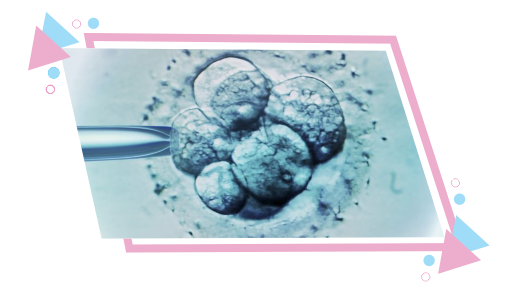Frozen Embryo Transfer
Services / Frozen Embryo Transfer

A frozen embryo transfer, or FET, is a type of IVF treatment in which a cryopreserved embryo created in a complete IVF cycle is thawed and transferred to a woman’s uterus. The cryopreserved embryo may come from a woman’s previous conventional IVF cycle, or it may be a donor embryo. If a donor embryo is used, the embryo is not genetically related to the woman or her partner.
More often, a transfer of frozen embryos occurs when there are “extra” embryos after a conventional IVF cycle. A “fresh” transfer is usually preferred. However, some doctors recommend the elective transfer of frozen embryos, also called the “freeze-everything” approach, where a new transfer is not attempted. In this case, all the embryos are cryopreserved and transferred to a FET cycle in the next month or so.
FET-IVF Procedure:
There are two basic types of FET-IVF cycles: hormonal support cycles and “natural” cycles. The FET-IVF cycle that is most often performed is a cycle with hormonal support. This is because the day of the transfer is easier to control (which makes the clinic and the fertility laboratory easier) and because hormone support is needed if there are ovulatory problems in the woman.
FET with hormonal support
A FET-IVF cycle with hormonal support begins at the end of the previous menstrual cycle, just like a conventional IVF cycle. The injections are injected with a medication designed to control and stop the reproductive cycle. The GnRH agonist, Lupron, is generally used, but other drugs can be chosen to suppress the pituitary gland.
Once the cycle is achieved, basic ultrasounds and blood tests are ordered. If everything looks good, estrogen supplementation begins. This is to help ensure a healthy endometrial lining. Estrogen supplementation is continued for approximately two weeks. Another ultrasound and more blood tests are ordered. Monitoring during a FET-IVF cycle is significantly less than in a conventional IVF cycle.
After approximately two weeks of estrogen support, progesterone support is added. This can be through injections of progesterone oil or possibly vaginal suppositories. Embryo transfer is programmed based on a) when progesterone supplementation is initiated and b) at which stage the embryo has been cryopreserved.
For example, if the embryo has been cryopreserved on day 5 after egg retrieval, the transfer of frozen embryos will be scheduled for day 6 after the completion of progesterone.
FET Natural Cycle
With a natural FET cycle, medications are not used to suppress or control ovulation. On the other hand, the embryo transfer is programmed according to the possible natural ovulation.
The moment of embryo transfer is crucial. A particular number of days after ovulation must occur. (As mentioned above, that day will depend on whether the embryo was frozen on the third day or the fifth day after the egg was recovered).
Because time is of the essence, the cycle is monitored closely at home with ovulation prediction tests or at the fertility clinic with ultrasounds and blood tests. Because ovulation prediction kits are not always easy to interpret, most doctors still rely on ultrasound and blood tests to transfer time.When ovulation is detected, progesterone supplementation is started and the date of embryo transfer is scheduled.
Risks of the FET-IVF
A frozen embryo transfer cycle has significantly lower risks than a complete IVF cycle. One of the main risks for IVF (and medicines for fertility) is ovarian hyperstimulation syndrome (OHSS). However, there is no need to worry about the SHO in an FET cycle since stimulant medications are not used for the ovaries.
Depending on the number of embryos transferred, there is a risk of multiple pregnancies. Twin pregnancies also carry an increased risk for the mother and children. Embryo transfer implies a slight increase in the risk of ectopic pregnancy. There is also a very small risk of infection.
With cryopreservation, some embryos may not survive the process of freezing and thawing. With the elective transfer of frozen embryos, this means that you could lose the embryos that would have been available if you had made a new transfer.
A meta-analysis found that pregnancies and children from frozen embryo transfers may, in fact, be healthier than those resulting from fresh embryo transfers.
Babies with frozen embryo transfer were in:
◆ Less risk of mortality
◆ Less risk of premature delivery
◆ Less risk of low birth weight